5 Tall Flowering Plants
Tired of short flowers that are hidden by other plants, or out of sight where no one can appreciate them. Knowing which flowering plants grow tall will help you create a stunning garden with highly visible blooms.
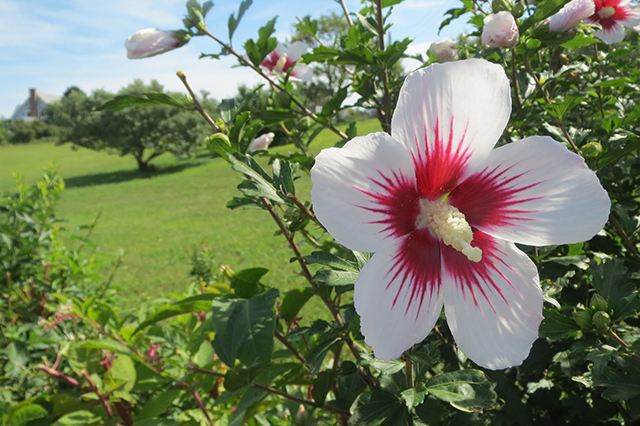
gardeninginfo-online.com gathered essential species, planting, and growing information on five incredible and tall flowering plants.
1. Sunflower (Helianthus)
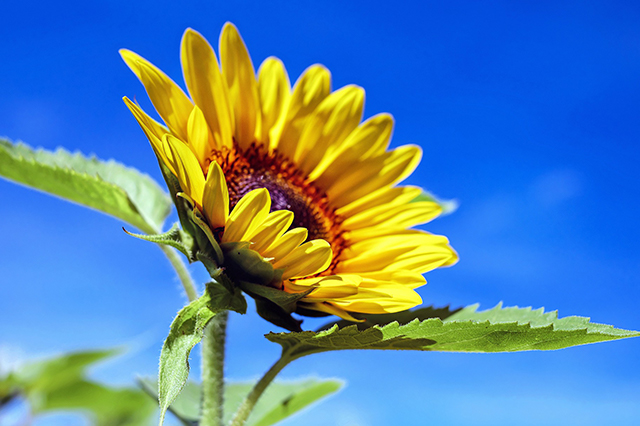
Annual sunflowers have a large, robust flower head, typically with a large, nearly black central part made up of thousands of tiny florets that later become seeds set in a spiral pattern. The petals typically appear bright yellow, while some varieties can be orange or red shades.
Soil – Sunflowers thrive in more alkaline soil (6.0 to 7.5 pH) and prefer nutrient-rich, well-drained soil. Ensure your soil is weed-free before planting this species.
Sun – Sunflowers require full sun (6-8 hours of direct sunlight daily).
Mature Height – Typical sunflowers grow from 6 to 10 feet tall, with some species reaching 15 to 20 feet.
Blooms – Annual sunflowers will bloom through summer and into autumn (until the first frost).
Hardiness Zone – 4 through 9
2. Lavender (Lavandula)
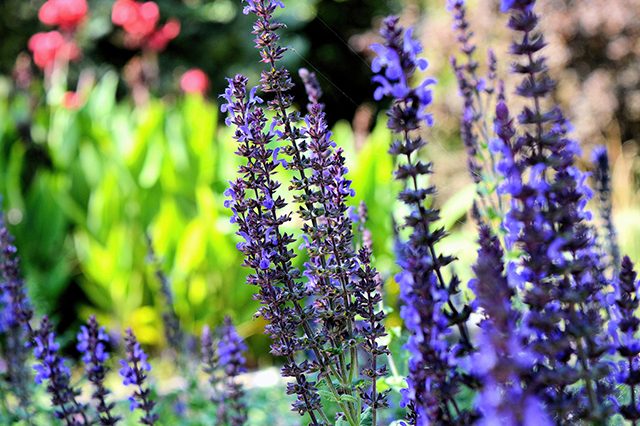
Perennial lavender plants are typically small, branching, and wide-spreading shrubs with grey-green leaves and long, vibrant flowering shoots. Leaves can be simple or pinnate, measuring 1 to 2 inches. Flowers bloom on shoots that can reach 8 to 16 inches. The flowers can bloom in white, pink, blue, violet, and purple shades.
Soil – Lavender plants thrive in alkaline soil (6.7 to 7.3 pH) and prefer nutrient-rich, well-drained soil. Lavender does not tolerate any excessive soil moisture or humidity.
Sun – Lavender plants require full sun (6-8 hours of direct sunlight daily) but can benefit from afternoon shade in hotter climates.
Mature Height – This species typically grows 20 to 24 inches tall, including its flower stalks.
Blooms – Flowering can occur in May (in regions with mild summers and winters). Another flush of blooms can appear in June, followed by a final bloom in late summer or early fall.
Hardiness Zone – 5 through 9
3. Dahlia (Dahlia)
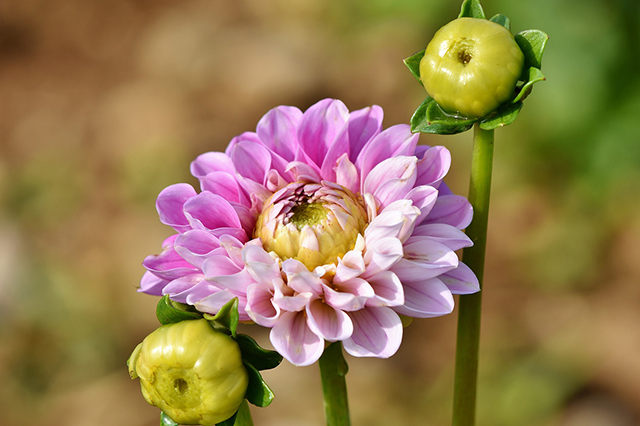
Dahlias are tuberous perennials, and most have simple leaves that are segmented and toothed or cut. Dahlias are popularly used in wedding arrangements and bouquets. Some of the most popular flower colors include red, orange, yellow, purple, white, and green. Astoundingly, blue is the only color dahlias do not appear in.
Soil – Dahlias will thrive in well-drained, loosened “dirt” soil with a 6.5 to 7.0 pH.
Sun – This species does best in full sun (6-8 hours of direct sunlight daily).
Mature Height – Typical dahlias grow from 4 to 5 feet tall.
Blooms – Dahlia flowers can appear in an impressive variety of colors and range in size from “petite” 2-inch blooms to giant 15-inch flowers.
Hardiness Zone – 8 through 10
4. Coneflower (Echinacea)
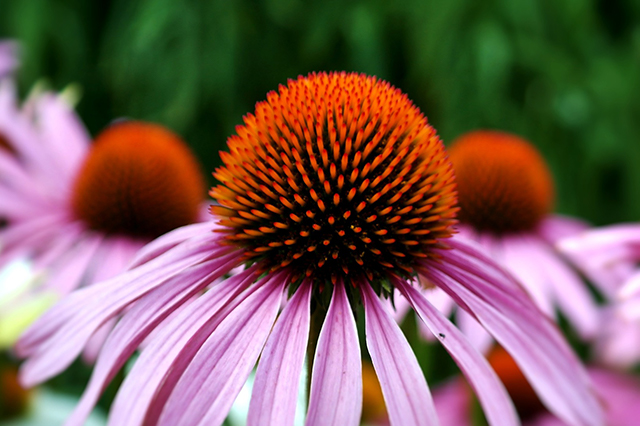
Echinacea purpurea, more commonly called “purple coneflower,” is a coarse, hairy, herbaceous perennial native to moist prairies, meadows, and open woods of the central to the southeastern United States.
Soil – The coneflower species thrives in nutrient-rich, well-drained soil with a 6.5 to 7.0 pH.
Sun – This species requires full sun (6-8 hours of direct sunlight daily) but will benefit from afternoon shade in hotter climates.
Mature Height – Typical coneflowers grow from 2 to 4 feet tall.
Blooms – Coneflower blooms from June through August and can appear in pink, red, orange, white, and yellow colors. Most varieties have large single-petaled blooms.
Hardiness Zone – 3 through 9
5. Hibiscus (Hibiscus)
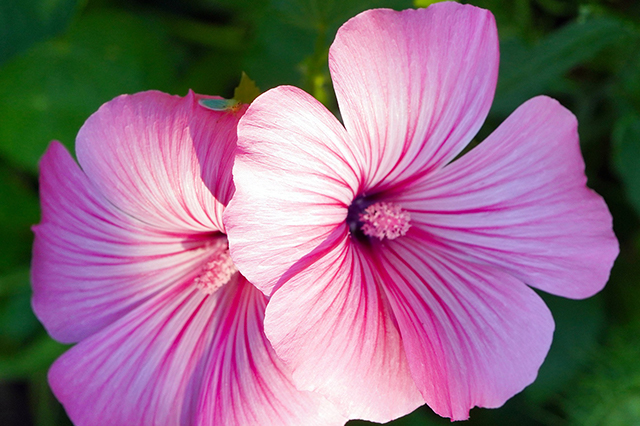
Perennial hibiscus leaves are ovate, simple, and 8 to 10.5 cm long. They are spirally arranged around a long stalk. The flowers are bisexual, large, and showy, grow up to 25 cm wide, stalked, and rise singly from the upper leaf axils. The five free petals joined at the base may be white, yellow, or red color.
Soil – Hibiscus grows best in well-drained soil, amended with organic matter. Hibiscus prefers acidic soil with a 6.5 to 6.8 pH.
Sun – Hibiscus does best in full sun (6 to 8 hours). They will grow in partial shade, but maximum growth and flowering will suffer.
Mature Height – Typical hibiscus will grow from 3 to 8 feet tall.
Blooms – With its showy, whorled flowers, this plant regularly attracts butterflies and hummingbirds. These tropical plants come in a wide range of striking colors, including: red, yellow, pink, orange, peach, coral, and white.
Hardiness Zone – 5 through 9
What is the Tallest Perennial?
For your garden, the tallest perennial flowering plant is hibiscus. Plants typically grow from three to eight feet tall, especially if grown in rich, well-drained soil with ample moisture.
Note: The swamp gum, or Australian mountain ash (Eucalyptus regnans), is native to southeastern Australia. The tree can reach heights over 375 feet and is the tallest angiosperm (flowering plant) species.
What is the Longest Flowering Perennial?
Coneflower is a perennial herb that blooms all summer long and is native to North America’s midwestern and southeastern regions. It has significantly tall stems, bears single pink or purple blooms, and has a central purple, orange, or brown cone. The large cone is a seed head with sharp spines.
Tall Flowering Garden Plants
In this article, you discovered 5 tall flowering plant species’ planting, growing, and flowering information to help you grow a striking garden full of thriving color.
By knowing which tall flowering plants to grow in your garden, you can create an eclectic scenery that benefits your senses, pollinators, and environment.
Not knowing which plants grow taller can leave your garden lacking aesthetic diversity and make it appear pretty montonous.
Sources:
extension.umn.edu/flowers/sunflowers
gardening.cornell.edu/homegardening/scene9108.html
plants.ces.ncsu.edu/plants/dahlia/
hortnews.extension.iastate.edu/coneflower-purple-echinacea-purpurea
hgic.clemson.edu/factsheet/hibiscus/